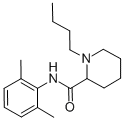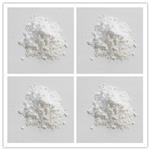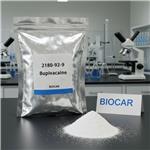
Bupivacaine
- Product NameBupivacaine
- CAS2180-92-9
- MFC18H28N2O
- MW288.43
- EINECS218-553-3
- MOL File2180-92-9.mol
Chemical Properties
| Melting point | 107.5-108° |
| Boiling point | 430.65°C (rough estimate) |
| Density | 1.0238 (rough estimate) |
| refractive index | 1.5700 (estimate) |
| pka | 8.09; also reported as 8.17(at 25℃) |
| Water Solubility | 101.5mg/L(25 ºC) |
| InChI | InChI=1S/C18H28N2O/c1-4-5-12-20-13-7-6-11-16(20)18(21)19-17-14(2)9-8-10-15(17)3/h8-10,16H,4-7,11-13H2,1-3H3,(H,19,21) |
| InChIKey | LEBVLXFERQHONN-UHFFFAOYSA-N |
| SMILES | C1(CCCCN1CCCC)C(=O)NC1C(C)=CC=CC=1C |
| CAS DataBase Reference | 2180-92-9(CAS DataBase Reference) |
| NIST Chemistry Reference | 2-Piperidinecarboxamide, 1-butyl-n-(2,6-dimethylphenyl)-(2180-92-9) |
| EPA Substance Registry System | 2-Piperidinecarboxamide, 1-butyl-N-(2,6-dimethylphenyl)- (2180-92-9) |
Safety Information
| Hazard Codes | T+ |
| Risk Statements | 26/27/28-38-41 |
| Safety Statements | 22-26-36/37/39-45 |
| RIDADR | 2811 |




